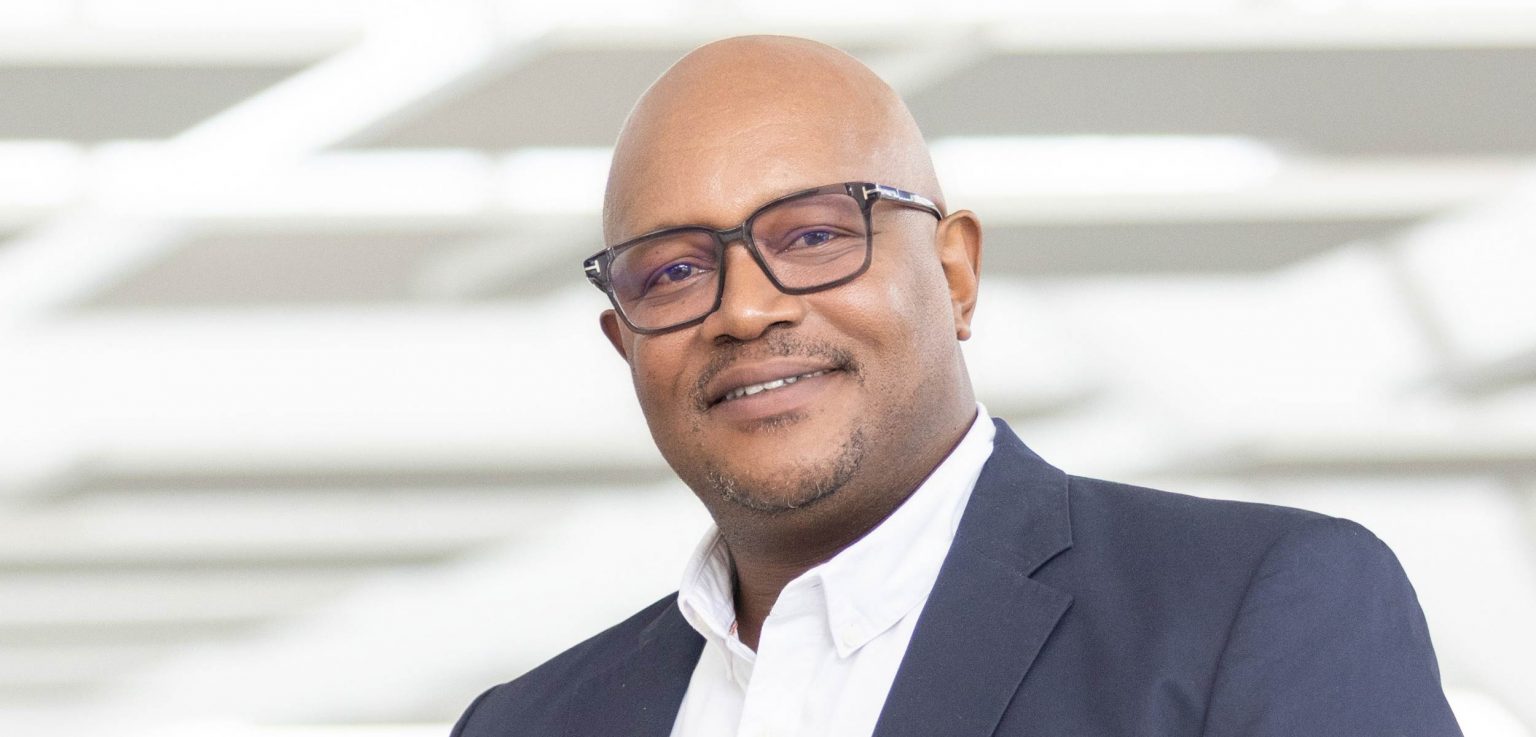Telkom on Monday reported interim results for the six months to end-September 2024 that showed solid progress in moving away from the group’s legacy networks and driving demand for its next-generation fibre and 4G/LTE services.
It reported strong growth in both fibre broadband and in mobile, suggesting it is winning market share from competitors. The share price ticked up on the numbers, showing investors are warming to CEO Serame Taukobong’s strategy of focusing on next-generation products and ditching legacy infrastructure as quickly as possible.
TechCentral editor Duncan McLeod sat down with Taukobong for an interview following the publication of the results. He asked the Telkom CEO about:
- The rapid decline in legacy infrastructure, and why ADSL is all but dead in the residential market;
- The restructuring at BCX, where 400 jobs have been cut in the past two months, and why Telkom is shifting the IT services company’s strategic focus;
- How Telkom is planning to make headway in corporate South Africa against rivals Vodacom and MTN;
- His views on the Competition Tribunal’s decision to block Vodacom’s acquisition of a co-controlling stake in fibre operator Maziv; and
- Why Telkom is no longer seeking a strategic investor for Openserve.
The interview transcript has been shortened and edited for clarity.
Duncan McLeod: Serame, thank you for your time. Please tell me about your strategy for BCX? You have recently been through a round of retrenchments.
Serame Taukobong: Sure. If you look at BCX and its peers, not just in South Africa but globally, they have been going through quite a lot of structural changes, reshaping themselves to find the nuggets and sweet spots. BCX has a mix of some businesses that are lower margin and higher cost and some of the more forward-looking businesses, which are generally higher margin and with an eye on the future. So, typically, that is your cloud, cybersecurity and IT-type of entities.
Part of phase one of the restructuring was looking at the BCX ecosystem, as opposed to your mobile ecosystem. This business sells people, right? It’s almost like a consulting type of proposition where it is billing human resources, to put it quite bluntly, so like a typical consultant ecosystem. And what we’ve done in phase one is ask what parts of our workforce are billable, and that’s the unfortunate, brutal transition that we’ve had to make in phase one: looking at the billability of our people, which has resulted in the exit of around 400 staff in the past two months.
The second part will be more a broader structural element where we say the business units that are not in line with that growth profile, we will exit in much the same journey as your EOHes and AONs have done. This is the direction for BCX.

The third part is really leveraging the strength of the broader Telkom ecosystem to say, connectivity gets us in, and that is a combination of Openserve and Telkom Mobile. BCX has a lot of strong corporate clients, like an Absa, for example, or a Standard Bank, but if we say, ‘What is Telkom Mobile’s share in those, it’s quite low, because historically, when we went into those environments, Telkom Mobile was a relatively weak proposition (compared to Vodacom or MTN).
So, how do we maximise, for example, in attacking a Standard Bank or an Absa now that Telkom Mobile is stronger. We can provide them with a One Telkom solution and reduce their spend by X amount, because now we can provide a comprehensive offering.
So, that’s the journey of BCX: where in the past they were fighting on their own, now they come with the One Telkom approach to make their fight more comprehensive.
DM: You said you are no longer looking for a strategic equity partner for Openserve. What is your take on the Competition Tribunal’s decision to block Vodacom from acquiring a co-controlling stake in fibre operator Maziv. Do you think that was the right move? I know you haven’t seen the reasons document yet, but given the talk about the need for consolidation in the fibre market, do you think that this has had a negative impact on the potential for consolidation, and how does the tribunal’s decision affect Telkom?
ST: Let me wear my industry hat to answer that. If we look at what’s happening globally, consolidation in the industry is a trend – and it’s a natural trend. When a deal of this magnitude (Vodacom and Maziv) is blocked – and we don’t yet know the reasons – it certainly does put a dampener on the global investment view of our industry. If you look at industry trends, despite the positive results that we’ve delivered today, if you look at the industry broadly, consolidation is natural.
So, it is an interesting directive that has come from the Competition Tribunal, especially when the communications authority, which is Icasa, approved the deal. Investors may start to question who is the authority that is driving the telecoms industry.

DM: What is Telkom’s thinking around the next spectrum auction, which is scheduled for the 2025/2026 financial year – so, by March 2026? What are you hoping to see from the auction?
ST: The first part is we asked Icasa to do a detailed analysis of the spectrum allocation and competitiveness and competition process flowing from the last auction, which I think Icasa has started – and that’s encouraging. It’s important for Icasa to ask what the desired outcome of that auction was, and whether that outcome was achieved.
Was their intention to extend 5G coverage across the country, and has that been achieved? Because if you look at what happened following that auction, we had severe load shedding and a significant amount of capex, across all network operators, was spent on remedies to deal with it, and the industry still has not received any of the relief from government we have sought, and this hampered the expansion of 5G.
So, when you go out on another auction, expecting the industry to spend billions more, challenged as we are on capex and relatively low revenue growth, what exactly is Icasa seeking to achieve?
The other key element that we also sought to address was whether it was going to balance competition, because that is the key issue that we said Icasa must look to address. It’s not just about embarking on a spectrum auction and what bands we’re hoping to get, but it should also be about addressing the key issue of competitiveness in the market.
DM: The strong growth you’ve seen in your mobile business, which has obviously been data led, would suggest that you are taking market share from your rivals. If so, are you taking it across the board, or is there one specific competitor you’re taking it from?
ST: If you look at the shape of the Telkom Mobile proposition, from the onset, being a late entrant to the market, we built a strong, data-driven proposition. And our customer base is significantly 4G driven. Now, where is the market going to? It is now about customers driving growth into 4G. 3G is now pretty much a thing of the past. Now you have to look at the shape of our organisation versus the competition. Our competitors still have quite a significant portion of 2G and 3G subscribers, and that’s where their growth is still coming from. As subscribers are moving from 2G to 4G, the attractive proposition that they’re seeing in the market is Telkom Mobile.
 DM: What about 5G? As far as I know you have not enabled 5G on smartphones yet. What is your strategic plan for 5G?
DM: What about 5G? As far as I know you have not enabled 5G on smartphones yet. What is your strategic plan for 5G?
ST: No, we have enabled 5G, but the key thing for us is the 5G ecosystem is really going to be price driven. 5G devices are still quite expensive, and we strongly feel that if you look at our 4G proposition, both from an output and a quality-of-service perspective, it is still exactly what customers want. Right now, the people who are making money from 5G are your suppliers of equipment, so your Huaweis and Nokias. As the 5G ecosystem becomes more pervasive and the cost for the end user comes down, that’s where you’ll start seeing the growth and output. But right now, we feel that the proposition that we have in 4G really meets customer demands, and particularly from the end-user device perspective.
DM: I know you’re moving to get off legacy copper and ADSL as quickly as possible. Where do you stand with that transition? How many ADSL customers do you still have on your network? And at what point are you going to switch off or decommission your copper network entirely?
ST: ADSL is just under 70 000 remaining, and a big portion of that rests in government offices. And what’s been encouraging about that is we renewed our government contract through the State IT Agency (Sita), so in the next four to five years – and we want to do it much faster – we’ll migrate a significant portion of those offices from legacy copper onto fibre. In Openserve, 81% of our revenue is now sitting on fibre or our next-generation platforms. In the next 18 months, as we execute on that Sita contract, it’s about covering over 6 000 offices nationally. It’s a massive project of upgrading and moving those offices from legacy infrastructure to fibre.
DM: It sounds like in the residential market, ADSL is already basically dead.
ST: Yes, it’s very small. And where there’s copper theft, we do not replace the copper anymore. We then move customers to LTE.
 DM: Lastly, you have said previously that you hope to resume dividend payouts, which were suspended back in 2020. Are you on track to do that?
DM: Lastly, you have said previously that you hope to resume dividend payouts, which were suspended back in 2020. Are you on track to do that?
TS: We reinstated the dividend policy, but the payment of a dividend will be determined by the board and the priorities for the business in terms of what the internal capex requirements are. So, we’ve not finalised whether we pay the dividend at year-end, but we’ve reinstated the policy and any payments will be strongly based on the level of free cash flow. – © 2024 NewsCentral Media
Get breaking news from TechCentral on WhatsApp. Sign up here





